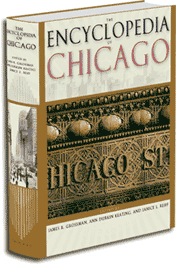Having lived in Canada for two decades, I can testify that Americans rather easily assimilate into this country, due to the considerable cultural similarities between the two countries, including (for the most part) a common language. If there were such a thing as an ex-pat American club in Toronto, I would not join, as I do not see myself having much in common with people from, say, New York, California or Texas.
However, if there were a Chicago club in our vicinity, I would seriously think of joining. After all, I was born just outside the "Windy City" in Oak Park, Illinois, home of such luminaries as Frank Lloyd Wright and Ernest Hemingway, and grew up in Wheaton, 25 miles west of the Loop, as the downtown core is popularly known. Like General Robert E. Lee of Virginia or Québécois nationalists (with whom I otherwise disagree politically), I can identify more easily with the local homeland of my birth than with the United States as a whole, which to me feels somewhat abstract.
For those of us with roots in Chicagoland, the University of Chicago Press has published a massive one-volume Encyclopedia of Chicago, which I just received as a gift from my exceedingly thoughtful sister-in-law and her husband, residents of one of the western suburbs of the great metropolis. It is the product of a co-operative effort between the Chicago Historical Society and the Newberry Library, and is edited by James R. Grossman, Ann Durkin Keating and Janice L. Reiff.

It contains more than a thousand pages of entries covering everything from the city's individual neighbourhoods to virtually every one of the hundreds of suburbs in the ten-county region comprising the Chicago metropolitan area. There is an index of prominent persons in Chicago's history, as well as one listing the major economic enterprises operating in the vicinity, from the long gone Elgin National Watch Company to Marshall Field and Company, until recently the region's major department store chain. Favourite television programmes, such as Garfield Goose and Friends and Bozo's Circus, have entries. The area's colleges and universities also have their own entries, including Wheaton College and, of course, the University of Chicago. Then there are the maps, which are a treat for the cartophile. And of course no book about Chicago would be complete without material devoted to its colourful political and criminal history as well as to its rail transportation.
I have located only a few errors of fact thus far, e.g., Pope Leo XIII's Rerum Novarum was published in 1891, not 1893. (This is in the entry on Roman Catholics.) My principal criticism is that some items are classified under titles that wouldn't immediately come to mind. For example, in looking for an article on Chicago neighbourhoods, I found them classified under community areas. All the same, the book is a pleasure to peruse — at least for those of us with origins there.
As of today the Encyclopedia of Chicago has gone on-line. Its website is a little clunky and appears still to be under construction. The search function in particular seems not to have been enabled. Once it is fully operational, however, it will likely prove to be an invaluable resource for those interested in the past and present of America's second city. We owe a debt of gratitude to the many people who devoted such loving attention to this volume and its associated website.

No comments:
Post a Comment